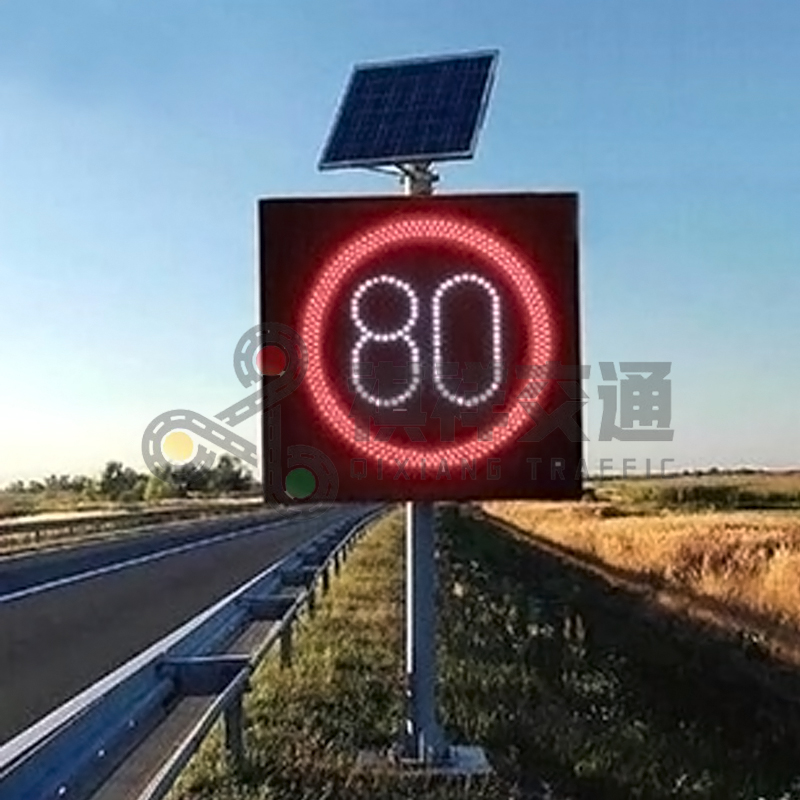Solar traffic signs are an innovative and sustainable solution that enhances road safety and traffic management. These signs are powered by solar energy, making them cost-effective and environmentally friendly. Installing solar traffic signs requires careful planning and consideration of various factors such as location, sunlight exposure and maintenance. In this article, we’ll discuss the process of setting up solar-powered traffic signs and the recommended spacing between each sign.
Set solar traffic signs
1. Site selection: The first step in setting up solar traffic signs is to carefully select the installation location. The site should have adequate sunlight throughout the day to ensure that the solar panels can effectively capture solar energy. Additionally, the location should be easily visible to motorists and pedestrians to maximize the effectiveness of the sign.
2. Solar panel installation: After selecting the site, the next step is to install solar panels. Solar panels should be placed at an angle that allows them to capture the maximum amount of sunlight. Proper placement of solar panels is critical to ensuring that the sign receives a consistent and adequate supply of solar energy.
3. Install signs: After the solar panels are installed, traffic signs can be installed. It is important to ensure that the signage is securely fastened to the mounting structure to withstand a variety of weather conditions and potential vandalism. Additionally, the height and angle of the sign should provide optimal visibility to road users.
4. Battery and control system installation: Solar traffic signs are equipped with rechargeable batteries and control systems to store and manage solar energy. These components should be installed and configured according to the manufacturer’s guidelines to ensure proper sign operation.
5. Testing and debugging: After installation, the solar traffic sign should be thoroughly tested to ensure its normal operation. This includes testing the visibility of the signs at different times of day and verifying that the solar panels are effectively charging the batteries. Any issues or discrepancies should be resolved before the sign is put into use.
Space between solar traffic signs
Spacing between solar traffic signs is an important consideration to ensure they effectively convey the intended message to road users. The exact spacing between signs can vary based on factors such as the speed limit of the road, the complexity of the traffic situation, and the visibility of the signs. In general, the following guidelines can be used to determine the spacing between solar traffic signs:
1. Speed limit: The speed limit of a road is a key factor in determining the spacing between signs. For roads with higher speed limits, such as motorways, the spacing between signs should be larger to give drivers enough time to react to the information displayed on the signs. Conversely, on roads with lower speed limits, the intervals between signs can be relatively short.
2. Traffic complexity: When determining the spacing between signs, the complexity of the traffic situation should also be considered, including intersections, crosswalks, potential hazards and other factors. In areas with higher traffic complexity, signs may need to be placed at closer intervals to ensure road users are fully informed and prepared for changing conditions.
3. Visibility: The visibility of signs plays a vital role in determining the spacing between them. In areas where visibility is limited due to factors such as curves, hills or obstacles, signs should be placed at short intervals to ensure they are visible to road users.
4. Regulatory Guidelines: Always refer to local regulatory guidelines and standards when determining spacing between solar traffic signs. These guidelines may provide specific advice based on sign type and prevailing road conditions.
Solar traffic sign maintenance
In addition to initial setup, proper maintenance is critical to ensuring the long-term effectiveness of solar traffic signs. Regular maintenance tasks for solar traffic signs may include:
1. Clean Solar Panels: Over time, dust, dirt, and other debris can accumulate on solar panels, reducing their efficiency at capturing solar energy. To maintain optimal performance, solar panels must be cleaned regularly.
2. Check the battery and control system: Regular inspection of the rechargeable battery and control system is important to ensure proper operation. This includes monitoring battery charge levels and resolving any issues related to the control system.
3. Inspect the mounting structure: The sign’s mounting structure should be inspected for any signs of damage or wear. Any problems with the installation structure should be resolved promptly to prevent safety hazards.
4. Assess the visibility of signs: The visibility of signs should be regularly assessed to ensure they are clearly visible to road users. This may involve adjusting the location of signs or addressing any obstructions affecting visibility.
By following these guidelines for installing and maintaining solar powered traffic signs, transportation authorities and road management agencies can effectively enhance road safety and traffic management while promoting sustainable development through the use of renewable energy. Proper installation, spacing and maintenance are critical to maximizing the benefits of solar traffic signs and ensuring their long-term functionality.
Post time: Aug-22-2024







